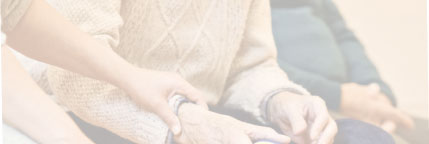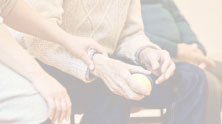
REQUEST A BROCHURE

REQUEST A DEMO
We'll even come to youAll you need to know about how to prevent Falls
Falls
Falls are a major cause of injury for older people. They are the leading cause of injury-related hospital admissions in people aged 65 years and over. Statistics prove that there is a greater incidence of falls in women than in men.
Falls are common among older people
It is estimated that at least one-third of people aged 65 years and over fall one or more times a year. Although many of these falls do not result in injury, they can cause:
• Hip and wrist fractures
• Hip and shoulder dislocations
• Head injuries and abrasions
• Bruising and sprains
• Fear of falling that can result in loss of confidence and restriction of activities.
Older people are almost 12 times more likely to have a fall than a motor vehicle or pedestrian accident.
Falls can be prevented
Contrary to popular belief, falls are not inevitable and many older people can be prevented from falling. Some risk factors for falls are relatively easy to change and, where falls occur, the severity of injuries can be reduced. The first step is to ensure that if a person is feeling unsteady or has a fall, even one that does not cause an injury, an appointment is made to discuss this with a doctor.
Avoid falls
To avoid falls and injuries from falls:
• Exercise to improve your balance, strength and flexibility. Home or group exercise programs and Tai Chi are good examples.
• Wear shoes that are comfortable and fit well – they should be wide enough in the toe area, have low or no heels, and have slip-resistant soles.
To increase safety in the home:
• Have adequate lighting. Replace light globes with CFL energy efficient light globes of 12 watts or higher. Use plug-in night-lights and have movement sensitive lights near stairs and the bathroom. These lights are available from most leading hardware stores.
• Remove clutter and make sure walkways and corridors are kept clear and well lit.
• Repair or replace carpets with worn areas, holes or long threads.
• Check that mats and rugs are secure and have no tears or wrinkles. Put adhesive strips on all mats and rugs, including those in the bathroom.
• Make sure that chairs and beds are sturdy and easy to get into and out of, and that tables and benches do not have sharp corners.
• Check that internal doors can be opened and closed properly, preferably without locks.
• Check that external doors can be locked and unlocked easily and are working properly.
• Wipe up spills immediately.
• Install grab rails in the bathroom (towel rails are not usually strong enough to use as grab rails).
• Store and use medications safely.
• To reduce the risk of falling in an emergency, make sure your house has smoke alarms in working order and a fire blanket or extinguisher that is easy to reach.
To increase safety outside the home:
• Clear away garden tools
• Kill mosses, fungi and lichen that make garden paths slippery when wet
• Mark the leading edge of outside steps (for example, with white paint) so they are easy to see
• Make sure outside steps are well lit
• Keep paths well swept
• Repair broken, uneven or cracked paths, patios and other walking surfaces
• Wear sunglasses and a hat to reduce sun glare.
To maximise physical wellbeing:
• Talk to your doctor or other health professionals about your diet, managing your medications (including non-prescription ones), and ways to manage chronic medical conditions, including dizziness and incontinence, to reduce risks of falling
• Have your eyes tested annually
• Visit your podiatrist regularly to minimise foot problems.
If you happen to have a fall at home:
• Don’t panic – stay still for a few minutes and try to calm down
• Call for help if you can
• Dial triple zero (000) to telephone emergency services or call your local doctor for help – keep your telephone in easy reach of the floor, for instance on a low table
• Decide whether you can get up yourself.
If you can get up by yourself
• Roll over onto your stomach and try to get into a crawling position
• Crawl to a stable piece of furniture, like a lounge chair
• Try to get up onto your knees
• Push up, using your strongest leg and arms, still firmly holding onto the furniture
• Sit down on the furniture.
If you can’t get up by yourself
• Try to crawl or drag yourself to somewhere on carpet and find anything that can keep you warm, such as bedclothes, a towel or clothing while you wait for help
• Use your personal alarm, if you have one
• If you don’t have a personal alarm, use an object that you can bang to make a loud noise, like a walking stick against the wall, to alert a neighbour
• If you know no one will hear you, keep warm and try to get up again later.
See your doctor to check for injuries and to assess whether there was a medical cause for the fall.
Things to remember
• Falls are a major cause of injury for older people.
• Falls may be an indicator of deteriorating health.
• Exercising can help maintain strength (muscle and bone) and balance.
• Taking precautions in and around the home can help you avoid falls and injuries from falls.
• Monitoring or personal alert systems or services can give older people independence and peace of mind.
References
• Don’t fall for it. Falls can be prevented! [online], Department of Health and Ageing, Australian Government. More information here.
• Victorian Admitted Episodes Dataset – Public hospital admissions due to injury (VAED), Monash University Accident Research Centre. More information here.
Source: https://www.betterhealth.vic.gov.au/health/healthyliving/falls-prevention-for-older-people
<< Back to Blogs


